My time in Ecuador – A travel report – part 2 (EN/ES) | Mi tiempo en Ecuador – Un informe de viaje – parte 2 (EN/ES)
Español abajo, gracias al traductor deepl | Spanish below, thanks to deepl translator
My time in Ecuador – A travel report – part 2
This is part 2 of my travel report from Ecuador. Here you can find the first part with the arrival, initial difficulties and a big challenge for me.
Today we visit the Chakra, the Fundación's agroforestry garden, and discover some creatures of the forest. Then we'll make a detour to the Fundación's branch in the Communidad Serena on the Rio Jatunyacu. And finally, we visit what used to be Ecuador's highest waterfall, San Rafael, which no longer exists.
Chakra - agroforestry for self-sufficiency
A chakra is a traditional forest garden in which fruit and vegetables are grown in complete harmony with nature and the forest for self-sufficiency and also as a source of food for wild animals. For this purpose, small areas of forest are cleared to grow crops under the protection of the large trees. However, care should be taken when clearing the areas and attention should be paid to where the machete hits. Wasps don't like it when their nests get attacked and react accordingly.
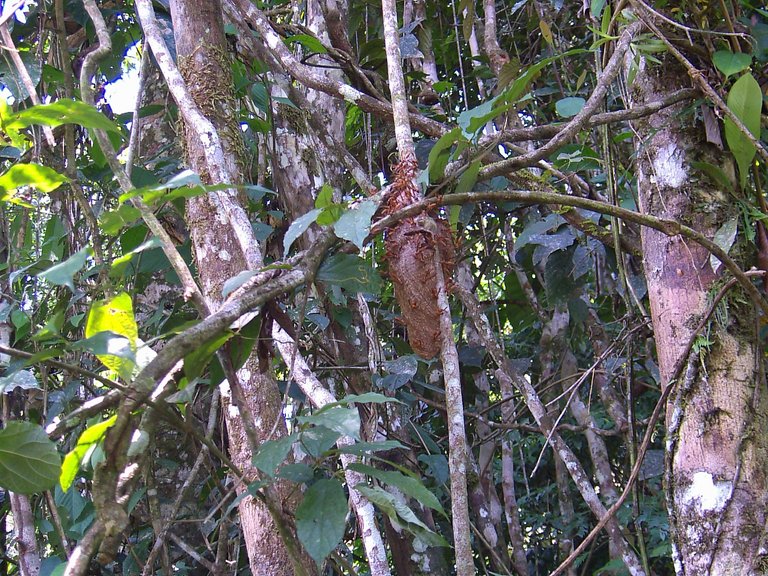

Fruits and vegetables
Yuca (also needed to make chicha), bananas, pineapples, cherimoya, cocoa and much more grew in our chakra and always provided us with sufficient energy.
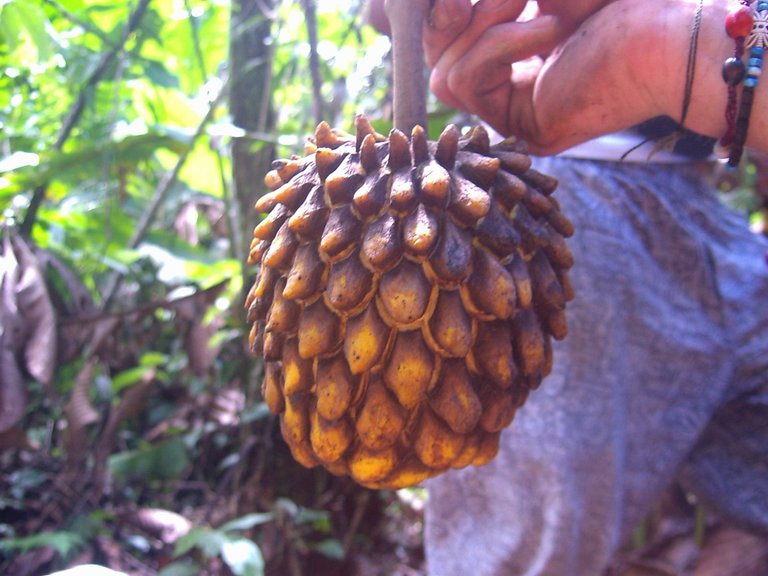 | 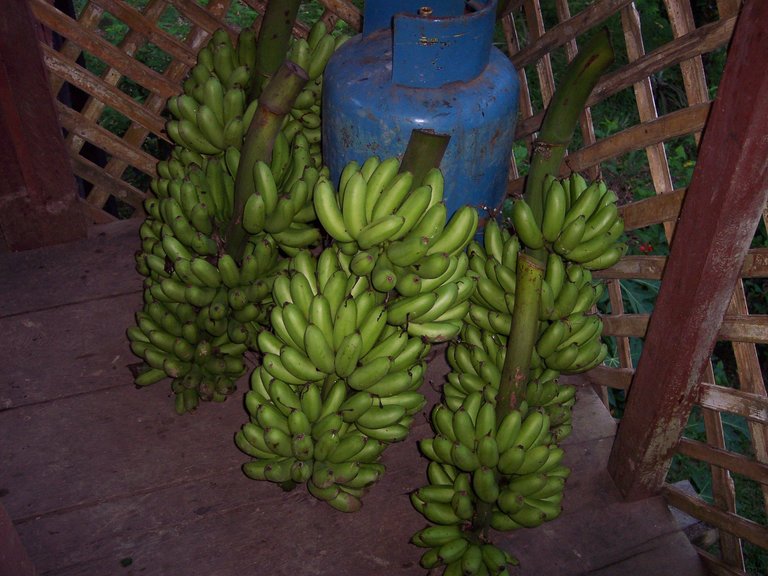 | 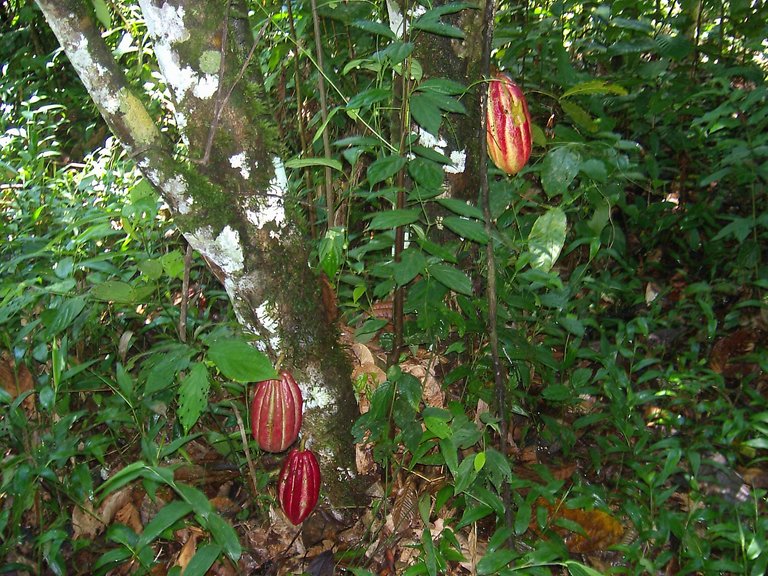 |
|---|
Animals
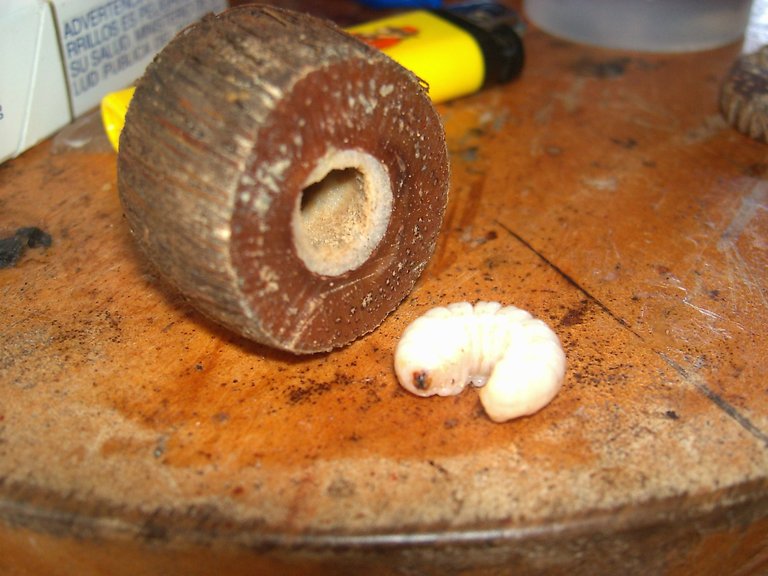
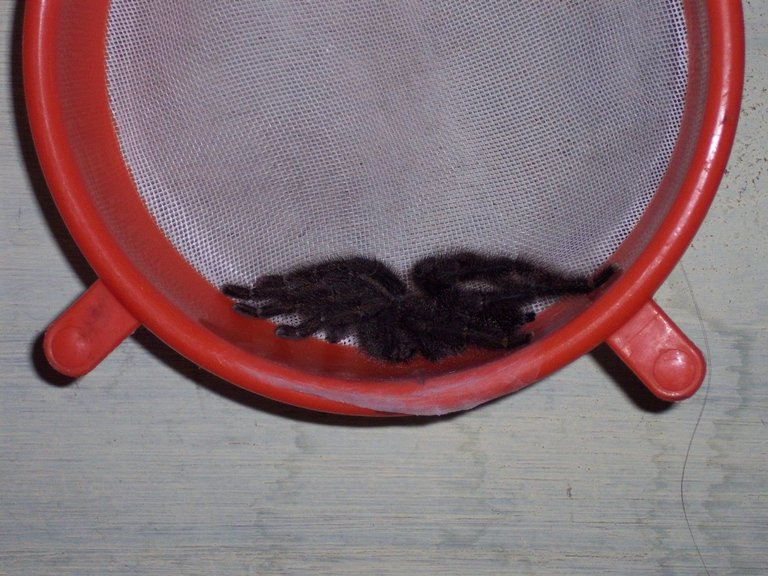

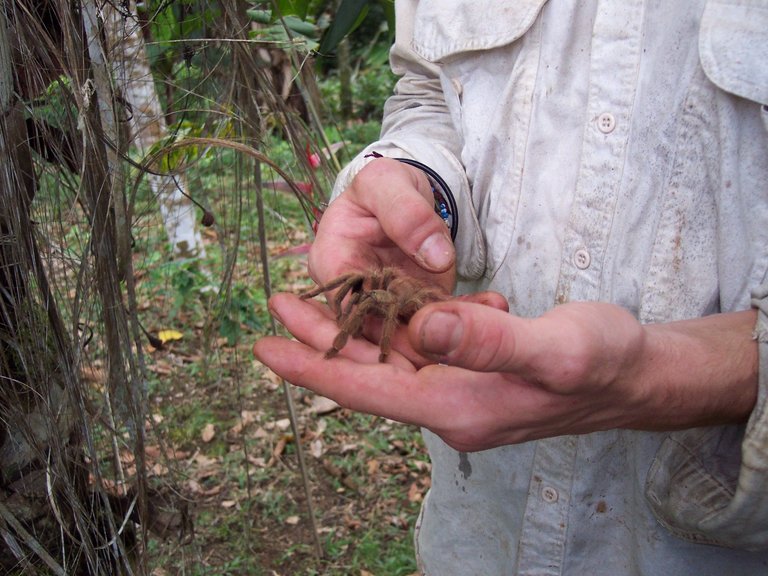

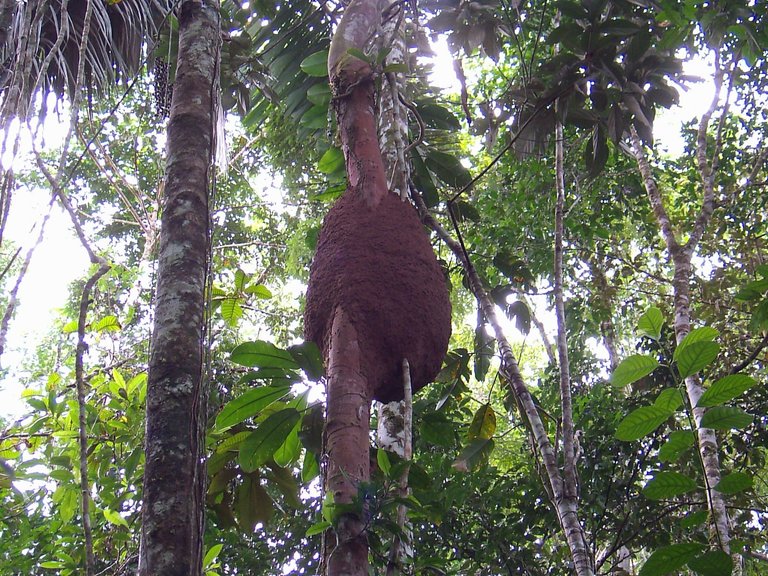
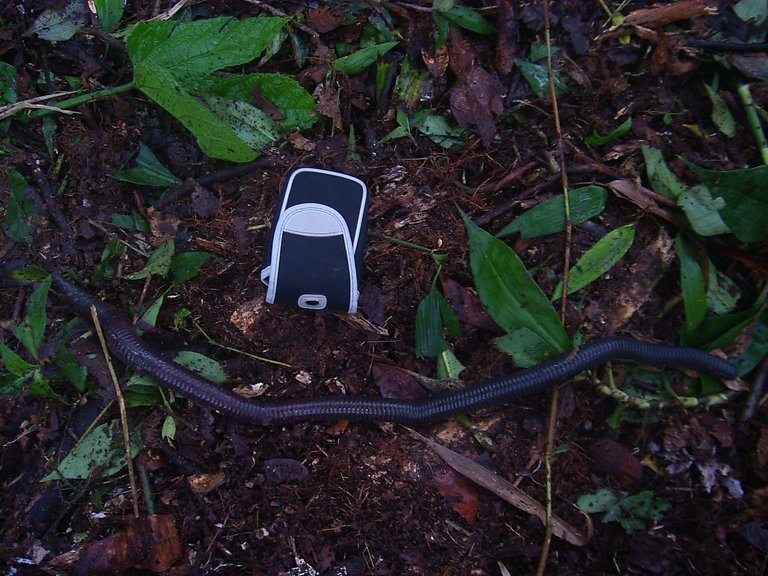
Communidad Serena
In Serena, a few kilometres southwest of Tena, the Fundación operated a branch office for a time. We travelled there by bus to the end of the road at the bridge. We then went on with the horse through the indigenous community to our camp for the next days.

The horse only carried our equipment, but even with that it had enough to do.

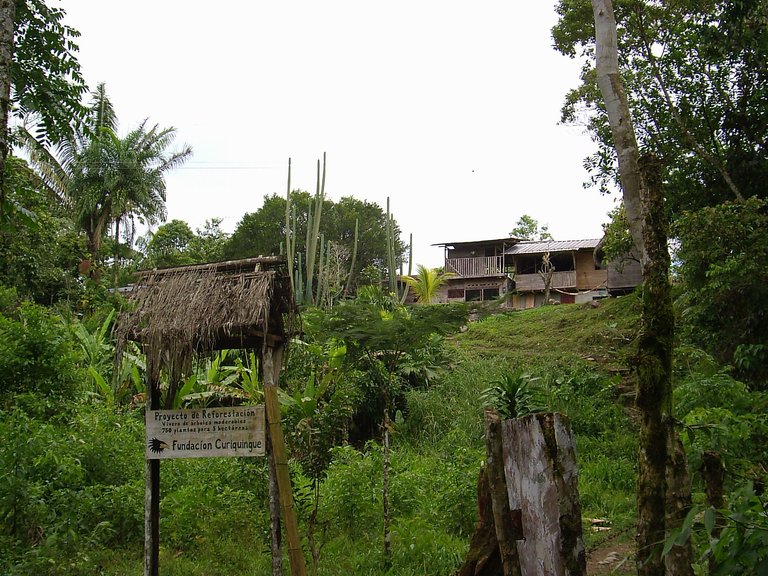
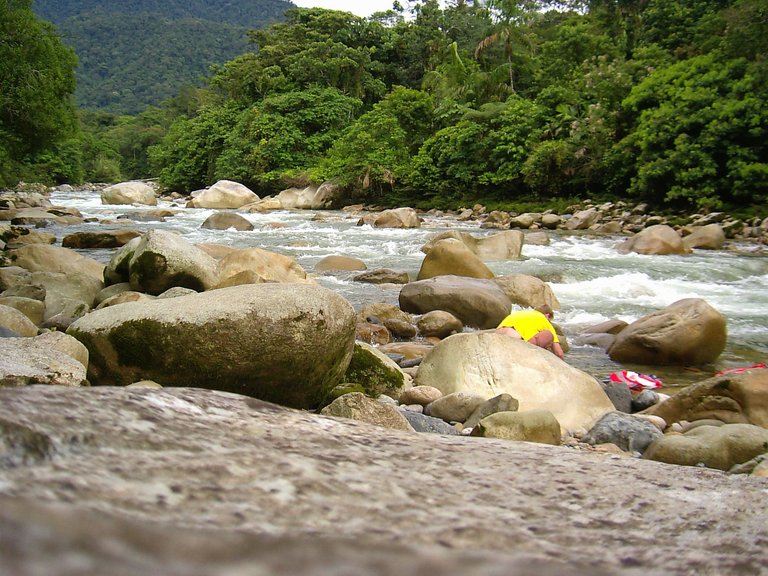
Serena, located on the beautiful Rio Jatunyacu, was a very remote place back then, which felt a bit like the end of the world. Pristine and beautiful. Today, the place is obviously also struggling with mining and the destruction of the environment that comes with it. That makes me sad.
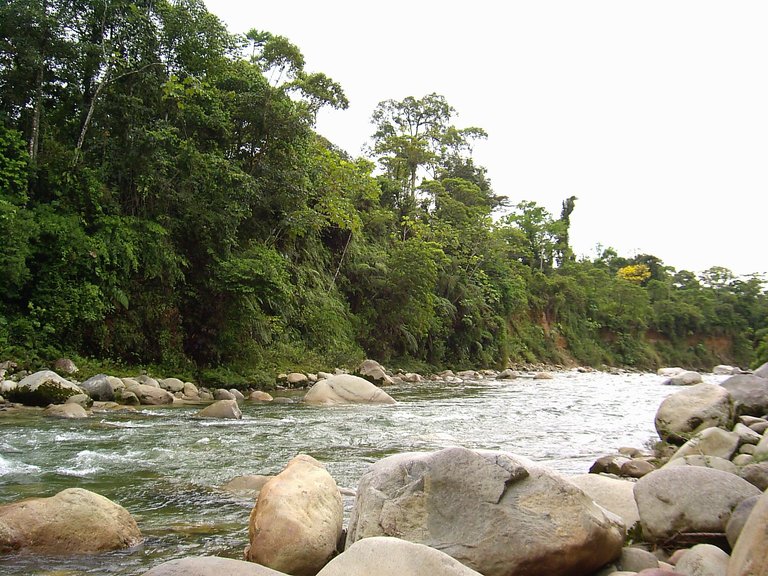
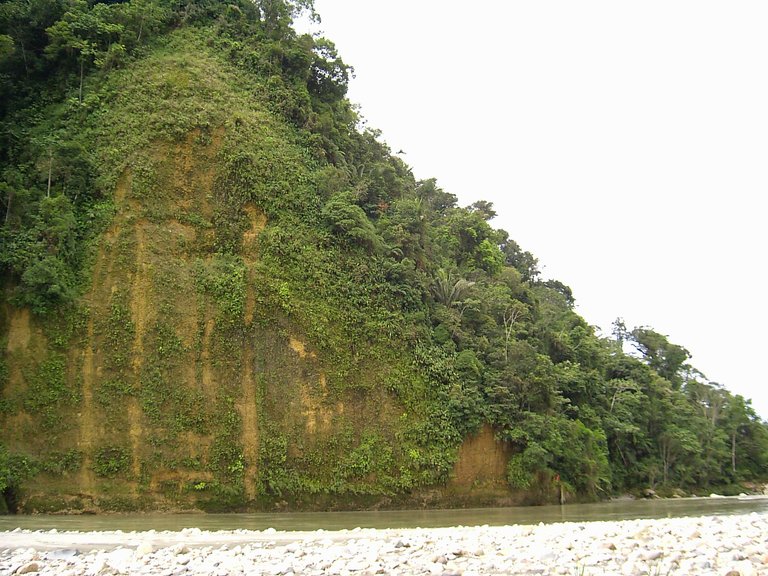
Of course, since the camp only gets intermittent use, the forest is quickly taking it all back. The first jobs were therefore cleaning the rooms, disinfecting the water from the cistern and making up the beds. Unfortunately, bedbugs also felt at home in the old mattresses, so I preferred to sleep on the wooden bench in the kitchen. Of course, I had forgotten my hammock.


And boys being boys, we naturally had to play a little with these lianas as we explored the cloud forest.
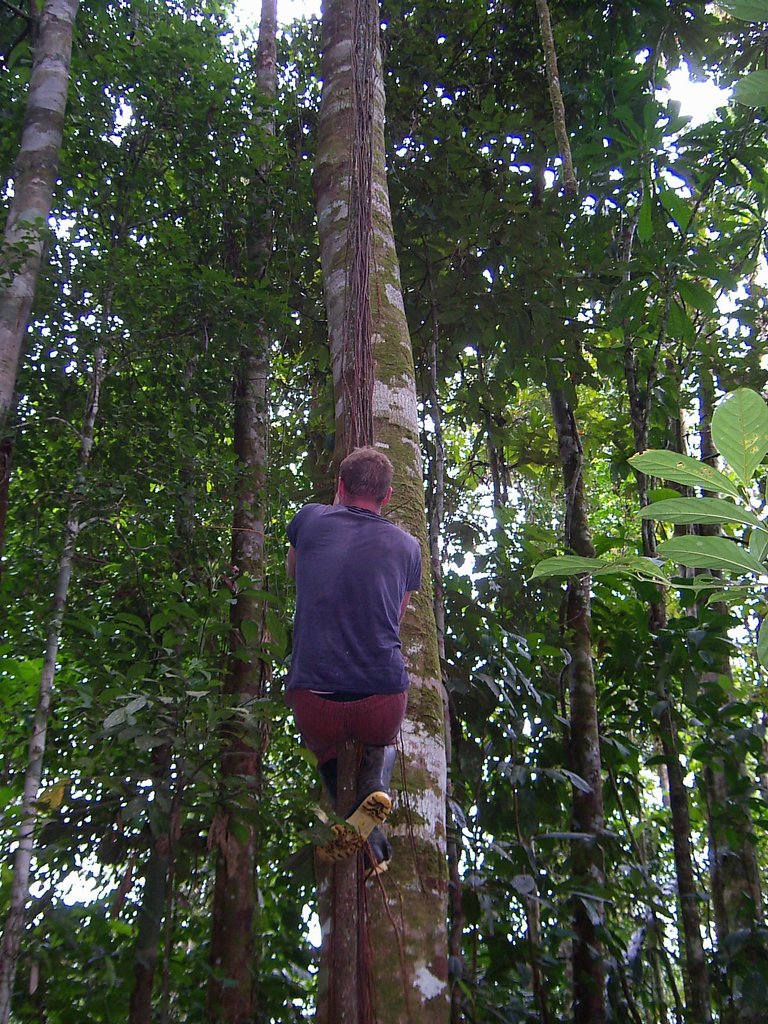
Waterfall San Rafael
The next journey takes us to the place where the Rio Coca forms the border between the provinces of Napo and Sucumbíos, to what was then Ecuador's largest waterfall, San Rafael. Today it has disappeared, a hole has opened up behind the edge and most of the water now flows through a natural tunnel behind the former waterfall.
This natural spectacle was truly impressive. Loud and powerful, a place that makes you feel very small as a human being.
That's it for the second part of my little travel report. I hope you enjoyed it and I'll see you again in the next part. Here you find the first part.
Español
Mi tiempo en Ecuador – Un informe de viaje – parte 2
Esta es la segunda parte de mi informe de viaje por Ecuador. Aquí puedes encontrar la primera parte con la llegada, dificultades iniciales y un gran reto para mí.
Hoy visitaremos el Chakra, el jardín agroforestal de la Fundación, y descubriremos algunas criaturas del bosque. Luego nos desviaremos a la sucursal de la Fundación en la Comunidad Serena, en el río Jatunyacu. Y, por último, visitaremos la que fue la cascada más alta de Ecuador, San Rafael, que ya no existe.
Chakra - agroforestería para la autosuficiencia
Una chakra es un huerto forestal tradicional en el que se cultivan frutas y verduras en completa armonía con la naturaleza y el bosque para el autoabastecimiento y también como fuente de alimento para los animales salvajes. Para ello, se desbrozan pequeñas zonas de bosque para cultivar bajo la protección de los grandes árboles. Sin embargo, hay que tener cuidado al desbrozar las zonas y prestar atención a dónde golpea el machete. A las avispas no les gusta que ataquen sus nidos y reaccionan en consecuencia.


Frutas y verduras
Yuca (también necesaria para hacer chicha), plátanos, piñas, chirimoyas, cacao y mucho más crecían en nuestro chakra y siempre nos proporcionaban suficiente energía.
 |  |  |
|---|
Animales







Communidad Serena
En Serena, a pocos kilómetros al suroeste de Tena, la Fundación tuvo una sucursal durante un tiempo. Allí viajamos en autobús hasta el final de la carretera, en el puente. Luego seguimos con el caballo a través de la comunidad indígena hasta nuestro campamento para los días siguientes.

El caballo sólo llevaba nuestro equipo, pero incluso con eso tenía suficiente.



Serena, situada en el hermoso río Jatunyacu, era entonces un lugar muy remoto, que se sentía un poco como el fin del mundo. Prístino y hermoso. Hoy, obviamente, el lugar también está luchando contra la minería y la destrucción del medio ambiente que conlleva. Eso me entristece.


Por supuesto, como la estación sólo tiene un uso intermitente, el bosque lo está recuperando todo rápidamente. Así pues, los primeros trabajos fueron limpiar las habitaciones, desinfectar el agua de la cisterna y hacer las camas. Por desgracia, las chinches también se sentían como en casa en los viejos colchones, así que preferí dormir en el banco de madera de la cocina. Por supuesto, había olvidado mi hamaca.


Y chicos siendo chicos, naturalmente tuvimos que jugar un poco con estas lianas mientras explorábamos el bosque nuboso.

Cascada de San Rafael
El siguiente viaje nos lleva al lugar donde el río Coca forma la frontera entre las provincias de Napo y Sucumbíos, a la que entonces era la mayor cascada de Ecuador, San Rafael. Hoy ha desaparecido, se ha abierto un agujero detrás del borde y la mayor parte del agua fluye ahora por un túnel natural detrás de la antigua cascada.
Este espectáculo natural era realmente impresionante. Ruidoso y poderoso, un lugar que te hace sentir muy pequeño como ser humano.
Hasta aquí la segunda parte de mi pequeño reportaje de viaje. Espero que os haya gustado y nos vemos en la próxima parte. Aquí tenéis la primera parte.

All photos are taken with a random old digital camera by me,
@cryptozeug, unless otherwise stated. Polished with Affinity Photo, or not.
You are a photographer on Hive?
Welcome to the friendly
Hive photographers Discord Server!
Cast your vote to @Witness4All!
A Hive node by a trusted member
and my good friend @cherokee4life
Click the banner and share some love!
Thank you for your visit!
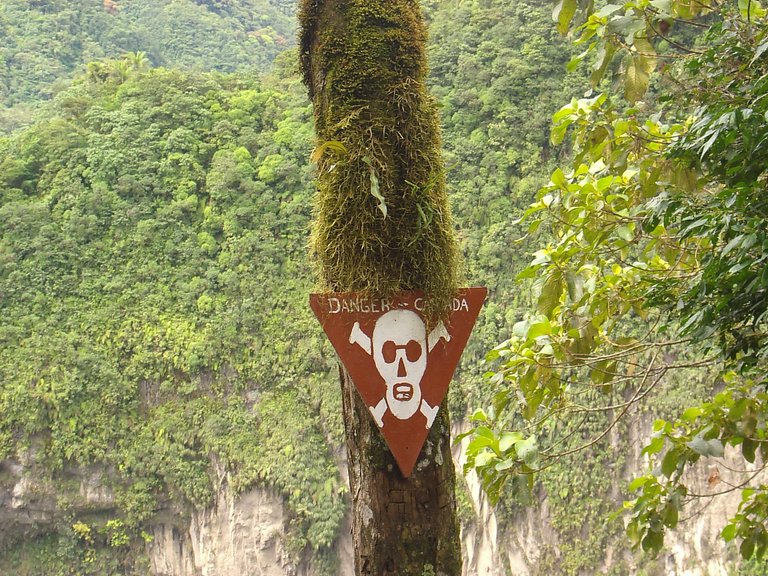
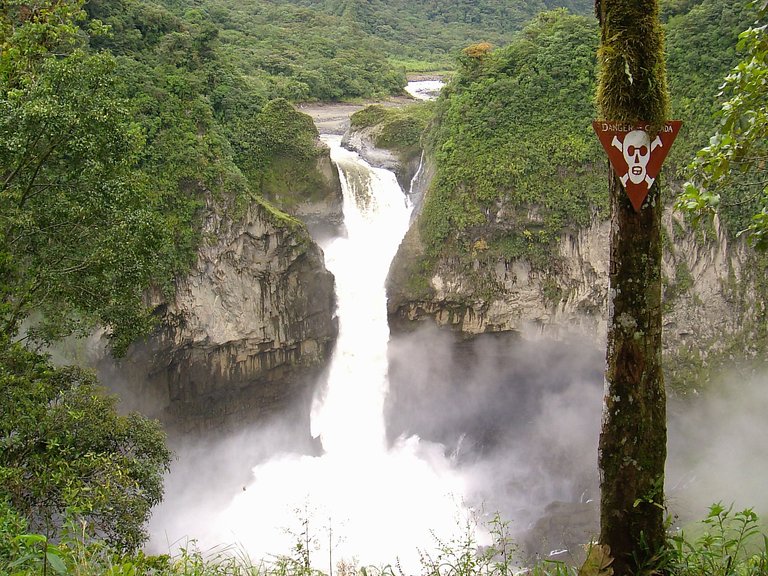
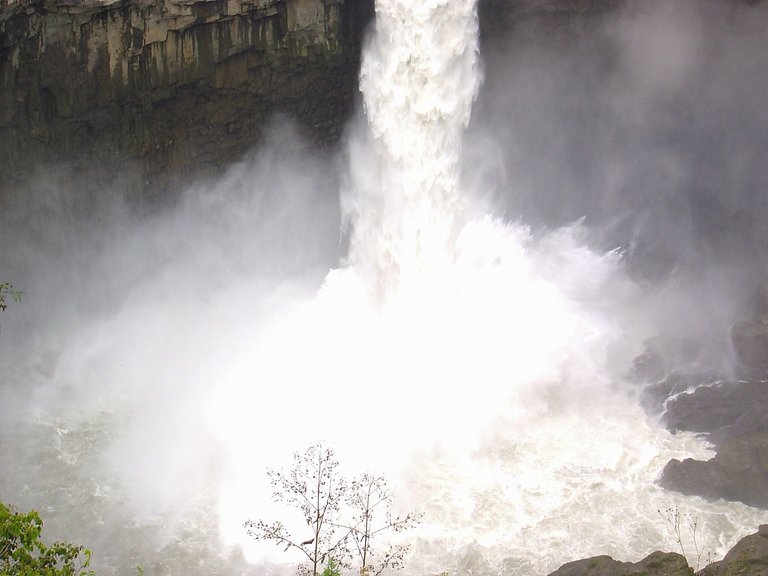


Congratulations @cryptozeug! You have completed the following achievement on the Hive blockchain And have been rewarded with New badge(s)
Your next target is to reach 20 posts.
You can view your badges on your board and compare yourself to others in the Ranking
If you no longer want to receive notifications, reply to this comment with the word
STOPAHHH thank you for the shout out!!!
Also I love all of this article but the freakin spiders. I can take baby spiders all day, but when they could literally bite off a finger....NOPE
What you see is not my finger. He found it, we called it "Blondie" and it lived with us for week in a cola can bound to a tree. Then suddenly left, nobody knows where... 😁
yeah, no, F that lol
I understand it, really, I'm also not a spider person. But a lost finger is your smallest problem when you step on the wrong snake.
Beautiful pictures!
No way I would travel that far, I don't want to get accused of smuggling drugs or get taken by a drug cartel 😅
Maybe I watch too many movies but I'm not getting out of Europe
The trick is to consume then right in place and not smuggle them. But I also missed some "items" in my luggage after I returned.
Also the situation now might be another than 21 years ago.
Dude.. believe it or not... I love spiders. I don't think one could live here and not like them. I have tarantulas everywhere.
I belive it. Got used to them during my time in Ecuador. We will never be friends but there's no fear.
Justo venía a preguntar eso d ela casacada, el por qué le dicen desaparecida, ahora entiendo. Pregunta sobre ello: ¿así como muestras en las fotos es cómo se ve ahora?
Y que bueno es poder conectar con la naturaleza de nuestro país.
Por desgracia, no tengo una foto actual mía, pero hay una en este sitio web y también una comparación del antes y el después.
https://news.mongabay.com/2020/03/why-did-ecuadors-tallest-waterfall-suddenly-disappear/
Sí, ha pasado mucho tiempo, pero sigo sintiéndome conectada a la naturaleza, aunque el bosque casi me haya devorado.
Looks like you're enjoying Ecuador! Give me a holler when you come by Cotacachi, would be fun to meet a fellow hiver :-)
Oh if it was so easy. That is 21 years ago now and I never made it back. If money was not the problem, I'd say we meet in a week...
Spoiler: Never made it to Cotacachi. But that's (sadly no) story of the next parts. 😁
Oh okay - 21 years ago. That's a long time. I live here for 11 years now, so your posts will be an interesting glimpse into the past.
I think so, they are also a memory trip for me, spend the whole weekend in Ecuador in my mind. I think things are different now, less nature, more violence. Hope I'm wrong, please correct me.
Also that's why I joined Hive Ecuador, want to get up to date.
Unfortunately, that's true. Ecuador has changed, has been changing since I arrived. Some things for the better, but a lot of them not so much. As Expats or tourists, we still have not so much contact with the violence and suffering that the drug gangs are causing, but we see it on the news. And unfortunately, it's a vicious circle - tourism went down during 2020, gangs gained ground due to lack of work. That caused violence to go up, making tourism go down, and so on.
And the government does not offer solutions, neither are they able to regain control, nor to just handle the day-to-day matters like electricity and regular functioning of the parts of the economy that are not affected yet.
But I've lived through many things here, and am mostly prepared for anything now. So I can still enjoy life, and so can many others 🙃
Really sad. That confirms my view from afar. Not only the gangs, but also the overexploitation of nature has increased. I hope that the vicious circle can somehow be broken.
@cryptozeug, I paid out 1.021 HIVE and 0.000 HBD to reward 8 comments in this discussion thread.